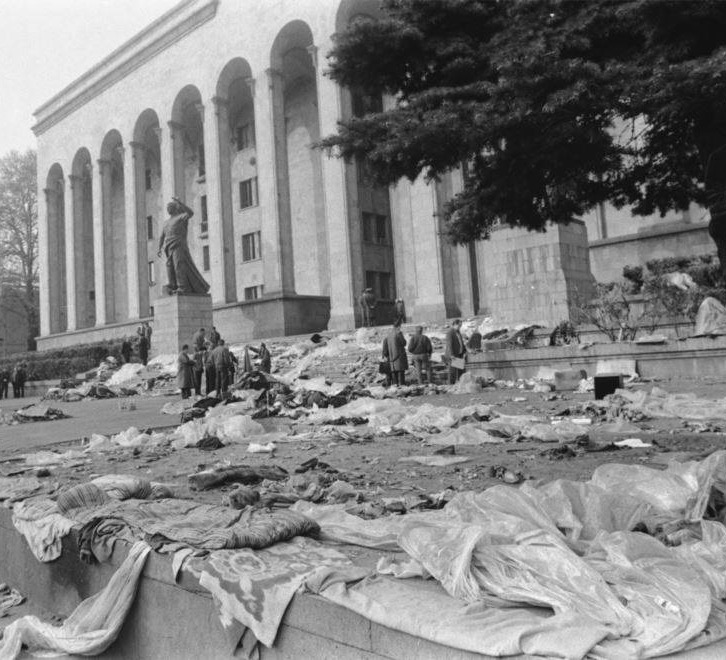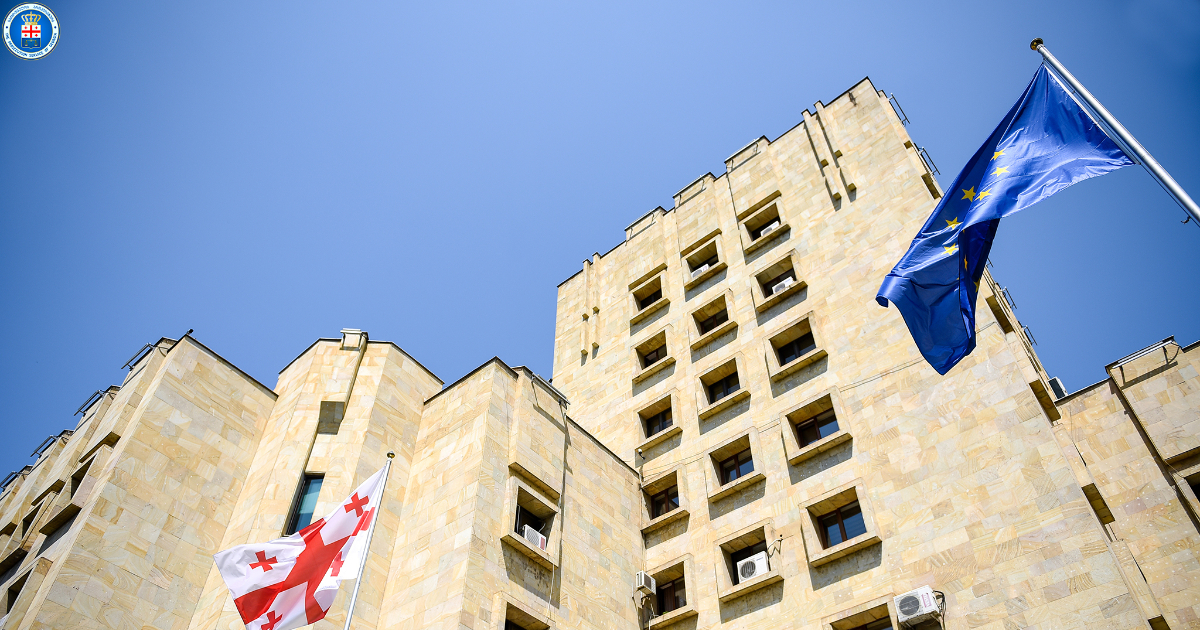April 9, 1989 – Events that made a new era

Author
Front News Georgia
32 years have passed since the tragedy of April 9, 1989. Russian tanks opposed the Georgians who took to the streets demanding independence.
On March 18, 1989, after holding the so-called “Likhni Assembly”, several thousand Abkhazians demanded the secession of Georgia and the restoration of the Union Republic status from 1921 to 1931. In response, anti-Soviet groups staged a series of unsanctioned rallies throughout the republic, claiming that the Soviet government was using Abkhaz separatist movements to oppose independence.
Protests peaked on April 4, 1989, when tens of thousands of Georgians gathered in front of the Government House on Rustaveli Avenue in Tbilisi. The protesters, led by the Independence Committee (Merab Kostava, Zviad Gamsakhurdia, Giorgi Chanturia, Irakli Batiashvili, Irakli Tsereteli and others), staged a peaceful demonstration and began a hunger strike to demand the punishment of Abkhaz separatists and the restoration of Georgia's independence. Local Soviet authorities lost control of the situation in the capital and could no longer quell the protests.
The Deputy Minister of Defense of the USSR, General Kochetov, had been in Tbilisi since April 6. On the morning of April 7, a meeting of the Politburo was held. Chaired by Ligachev. An order was issued for the transfer of regular and internal troops to Tbilisi. Kochetov, Commander-in-Chief of the Transcaucasian Military District, Colonel-General Rodionov, and First Secretary of the Georgian Communist Party Jumber Patiashvili developed a general plan for calling the rally.
On April 7, at 21:00, Patiashvili asked the leadership of the USSR to send reinforcements to restore order.
On April 8, a meeting of the Defense Council of the Republic was held, where Rodionov and Kochetov made promises to members that the operation would end without bloodshed. Rodionov received approval for the operation from Defense Minister Yazov, and by the decision of the Central Committee of the Communist Party of the Soviet Union, the forces of the Ministry of Defense and the Interior were united for the operation.
During the day and night, the 4th Regiment of the Special Motorized Rifle Division entered Tbilisi, emergency militia units from Perm and Voronezh.
At dawn on April 9, at 4:00 a.m., Soviet Army units dispersed protesters gathered in front of the Government House with unprecedented brutality.
On April 9, at 11:00, the curfew was announced in Tbilisi, but the population was informed about the curfew on local television only at 22:15. Rodionov was appointed military commander of the city.
Lethal weapons were used during the dispersal of the rally: chemicals, demolition bars, firearms, armored personnel carriers and tanks.
The struggle for Georgia's independence then claimed the lives of 21 people, injured dozens, and poisoned up to 2,000 people with an unidentified chemical.
Two years later, on April 9, 1991, President Zviad Gamsakhurdia declared this date as the Day of Restoration of Georgia's State Independence.
"The declaration of the restoration of Georgia 's independence is symbolic. The revelation is on April 9, because the fate of Georgia was decided on this day. The souls of the martyrs of April 9 rejoice in us and rejoice in the heavenly light.” said President Zviad Gamsakhurdia.
32 years ago, on April 9, 1989, Russian tanks and soldiers of the Empire killed: Adamia Aza – 22 years old, Bezhanishvili Eka – 16 years old, Giorgadze Nato – 23 years old, Dolidze Tamuna – 28 years old; Enukidze Tina – 70 years old; Toidze Nino – 25 years old, Kikvidze Zaira – 61 years old, Loladze Manana – 33 years old; Mamulashvili Tamar – 50 years old; Nozadze Mamuka – 22 years old, three-year-old Nana – 41 years old; Chkonia-Samarguliani Marina – 31 years old; Chipashvili Eliso – 25 years old, Chovelidze Tamar – 16 years old, Jangirashvili Nodari – 40 years old, Jincharadze Mzia – 43 years old, Melkadze Manana – 23 years old, Bashaleishvili Natia – 15 years old, Kvasroliashvili Shalva, Karseladze Gia – 25 years old.
Tags:





